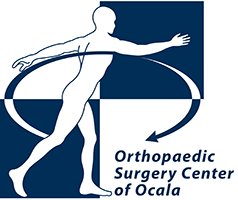Total Shoulder Replacement Surgery
Total shoulder replacement surgery can alleviate chronic pain caused by osteoarthritis. Measures to replace the shoulder joint enable the ball and socket to move freely improving mobility and reducing pain.
Our total shoulder replacement surgery relieves chronic joint pain interfering with daily activities. We provide personalized care every step of the way – from preparation to procedure through recovery and outcomes.
Request a consultation to discuss your shoulder pain and getting back to living.What Happens During Total Shoulder Replacement Surgery?
The shoulder itself is not replaced in this surgery, as is commonly thought. Instead, an implant is used to re-cap the damaged bone ends.
- The top of the humerus is removed from the socket.
- To prepare the upper portion of the shoulder for the artificial socket, a tool is used to remove deteriorated cartilage and worn bone.
- The metal socket is fitted into the top of the humerus before a plastic socket cup is adhered to the top of the implant.
- The socket is reshaped to create a stable surface on which to attach the metal ball component.
- The base of the metal ball is secured with screws and the ball is then fitted into place.
What Happens After Total Shoulder Replacement Surgery?
You will be discharged home from the surgery center. Upon leaving the surgery center you will be given a shoulder immobilization device to use at home until you see your surgeon at your post-operative appointment.
Our customized recovery solutions provide the post-op resources you need to regain your mobility, strength and life in the comfort of your home.
What Are the Outcomes for Total Shoulder Replacement?
Most people who have shoulder replacement surgery experience significant pain relief, improved mobility and a better overall quality of life.
During your first six weeks after surgery you will do no shoulder motion, and it is critical that you wear your sling/immobilizer at all times. Your surgeon will advise you on when you may come out of your sling and what activities you may perform at your post-operative appointments. During your follow-up appointments your surgeon will also discuss exercises that you may perform to help build your range of motion and strength back up.
